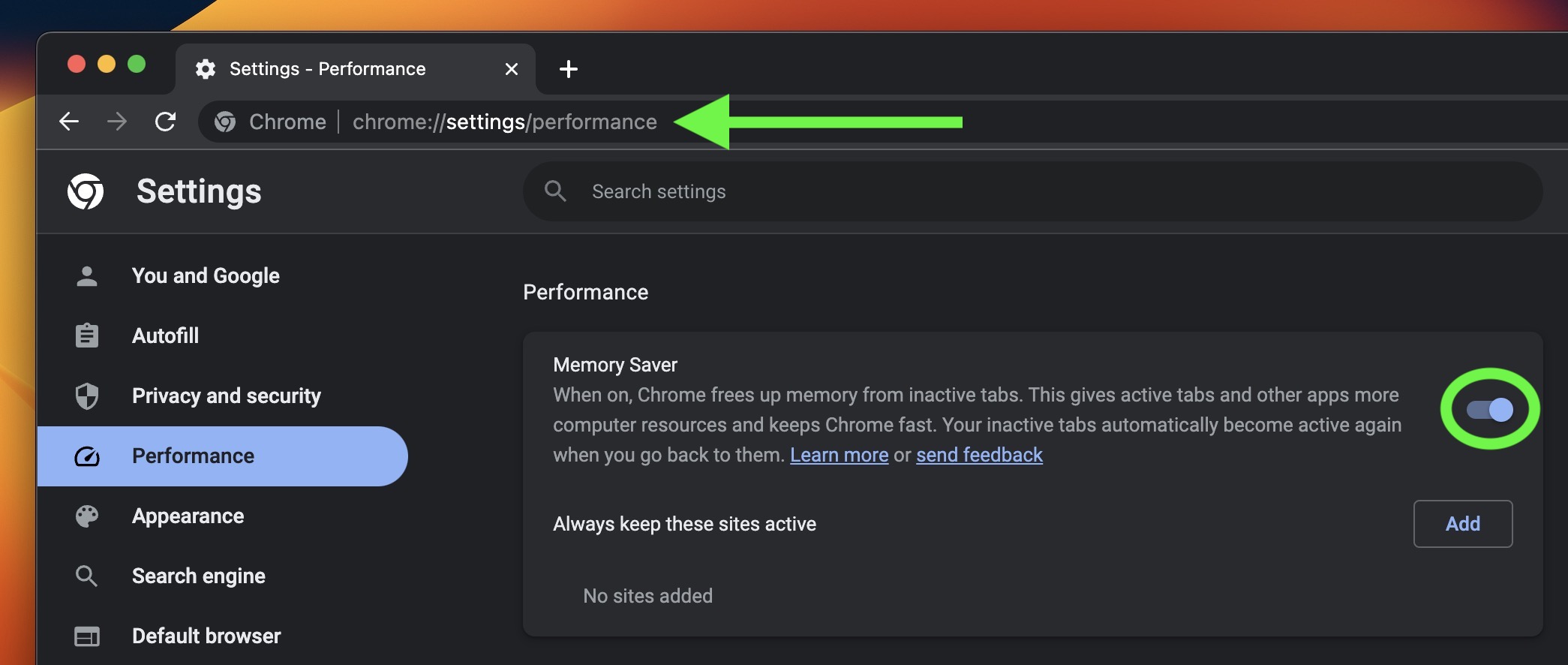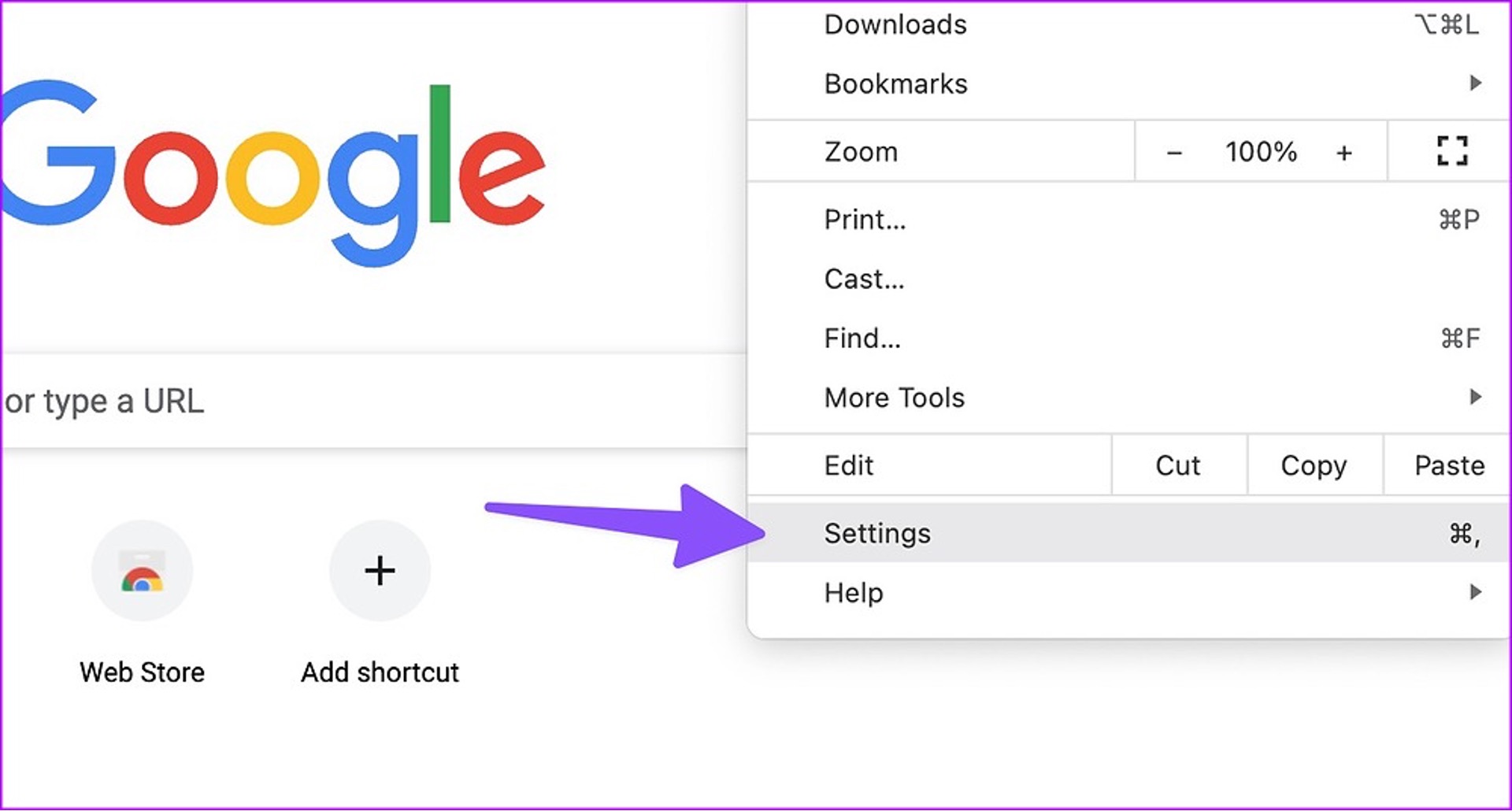Introduction
Google Chrome is one of the most popular web browsers, known for its speed, user-friendly interface, and extensive range of extensions. However, as you open more tabs and install more extensions, you may notice that Chrome starts consuming a significant amount of memory, potentially slowing down your computer. This can be frustrating, especially if you rely on Chrome for work, entertainment, or both.
Thankfully, there are several strategies you can employ to optimize Chrome's memory usage and enhance its performance. By implementing these techniques, you can enjoy a smoother browsing experience and prevent Chrome from hogging excessive system resources. From disabling unnecessary extensions to utilizing Chrome's built-in tools, these methods are designed to help you make the most of your browsing sessions without compromising on speed or functionality.
In this article, we will explore practical and effective ways to reduce Chrome's memory usage. By following these tips, you can streamline your browsing experience, minimize system slowdowns, and ensure that Chrome operates efficiently, even when handling multiple tabs and complex web applications. Whether you're a casual user or a power user, these strategies can make a noticeable difference in how Chrome performs on your device.
Let's delve into the details of each method and discover how you can optimize Chrome to use less memory without sacrificing the features and extensions that you rely on for your daily browsing needs. Whether you're a seasoned Chrome user or new to the browser, these techniques are accessible and can be easily implemented, allowing you to enjoy a more responsive and streamlined browsing experience.
Disable Unnecessary Extensions
Google Chrome's extensive library of extensions offers a wide array of functionalities, from ad blockers to productivity tools. While these extensions can enhance your browsing experience, having too many active extensions can significantly impact Chrome's memory usage. Disabling unnecessary extensions is a crucial step in optimizing Chrome's performance and reducing its memory footprint.
When you install a new extension, it becomes a part of Chrome's ecosystem, utilizing system resources and potentially contributing to memory bloat. To address this, it's essential to evaluate your current set of extensions and identify those that are no longer essential to your browsing needs.
To begin the process of disabling unnecessary extensions, navigate to Chrome's menu and select "More tools" followed by "Extensions." Here, you will find a list of all installed extensions, each accompanied by a toggle switch to enable or disable them. Take a moment to review each extension and consider its utility. If you find an extension that you no longer use or that duplicates the functionality of another extension, consider disabling it.
It's important to note that some extensions may run in the background, consuming memory even when you're not actively using them. To identify such extensions, look for those that have a significant impact on Chrome's memory usage. You can do this by accessing Chrome's built-in Task Manager (Shift + Esc) and observing the memory footprint of each extension. If you notice that certain extensions consistently consume a substantial amount of memory, it may be prudent to disable or remove them.
By streamlining your set of active extensions, you can significantly reduce Chrome's memory usage, leading to a more responsive browsing experience. Additionally, fewer active extensions can contribute to improved browser stability and faster loading times for web pages.
In summary, disabling unnecessary extensions is a proactive approach to managing Chrome's memory usage. By regularly evaluating and decluttering your list of extensions, you can ensure that Chrome operates efficiently, even when handling multiple tabs and complex web applications. This simple yet effective strategy empowers you to tailor Chrome to your specific browsing requirements while minimizing its memory footprint, ultimately leading to a more enjoyable and seamless browsing experience.
Use Chrome's Built-in Task Manager
Chrome's built-in Task Manager is a powerful tool that provides valuable insights into the resource usage of individual tabs, extensions, and processes running within the browser. By leveraging this feature, users can identify memory-intensive elements and take targeted actions to optimize Chrome's performance.
To access the Task Manager, simply press Shift + Esc while Chrome is open. This action will launch the Task Manager, presenting a detailed breakdown of all active processes and their respective memory and CPU usage. The Task Manager's interface is intuitive, displaying information in a tabular format, allowing users to quickly assess resource consumption across different components of the browser.
One of the key benefits of the Task Manager is its ability to pinpoint memory-hungry tabs and extensions. Users can easily identify which tabs or extensions are consuming excessive memory, potentially leading to performance issues. By identifying these resource-intensive elements, users can make informed decisions about which tabs to close or which extensions to disable, effectively reducing Chrome's memory footprint.
Furthermore, the Task Manager enables users to monitor the impact of individual websites on system resources. This feature is particularly useful when encountering web pages that exhibit high memory or CPU usage. By isolating these resource-intensive sites through the Task Manager, users can take appropriate actions, such as closing the tab or investigating potential alternatives, to mitigate the impact on Chrome's overall performance.
In addition to monitoring memory and CPU usage, the Task Manager provides insights into network activity, allowing users to identify tabs or extensions that may be consuming excessive bandwidth. This functionality is valuable for users with limited internet connectivity or those seeking to optimize their browsing experience by identifying and addressing network-intensive elements within Chrome.
In summary, Chrome's built-in Task Manager serves as a valuable resource for users looking to optimize the browser's performance and reduce memory usage. By leveraging this tool, users can gain visibility into resource-intensive tabs, extensions, and processes, enabling them to make informed decisions to streamline Chrome's operation. Ultimately, the Task Manager empowers users to take proactive measures to enhance their browsing experience, ensuring that Chrome operates efficiently and responsively, even when handling complex web applications and multiple tabs.
Clear Browsing Data Regularly
Regularly clearing browsing data is a fundamental practice for optimizing Chrome's performance and managing its memory usage. Over time, Chrome accumulates temporary files, cookies, cached images, and other browsing data, which can contribute to increased memory consumption and potentially impact the browser's responsiveness. By routinely clearing this data, users can effectively declutter Chrome and ensure that it operates efficiently, even when handling numerous tabs and web applications.
To initiate the process of clearing browsing data, users can access Chrome's settings by clicking on the three-dot menu in the top-right corner and selecting "Settings." Within the settings menu, navigate to the "Privacy and security" section and click on "Clear browsing data." Here, users can specify the types of data to be cleared, including browsing history, cookies, cached images and files, and more. Additionally, users can choose the time range for which they want to clear the data, providing flexibility in managing their browsing history and associated files.
Clearing browsing data serves multiple purposes in optimizing Chrome's memory usage. By removing cached images and files, users can free up valuable disk space and reduce the strain on system resources, leading to improved browser performance. Additionally, clearing cookies and other site data can enhance privacy and security while also contributing to a more streamlined browsing experience.
Furthermore, regularly clearing browsing data can address potential issues related to corrupted or outdated cached files, which may hinder the smooth operation of web pages. By refreshing the cache and removing outdated data, users can ensure that Chrome effectively retrieves and displays web content, minimizing the risk of performance bottlenecks and memory inefficiencies.
In summary, clearing browsing data regularly is a proactive strategy for managing Chrome's memory usage and optimizing its performance. By periodically removing temporary files, cached data, and browsing history, users can maintain a lean and efficient browsing environment, promoting faster loading times, improved responsiveness, and a more enjoyable overall browsing experience. Incorporating this practice into your routine maintenance of Chrome can significantly contribute to a smoother and more efficient browsing experience.
Enable Hardware Acceleration
Enabling hardware acceleration in Google Chrome can significantly enhance the browser's performance and reduce its memory usage, especially when handling graphics-intensive tasks and multimedia content. By leveraging the computational power of the device's GPU (Graphics Processing Unit), hardware acceleration offloads certain tasks from the CPU, leading to smoother rendering of web content and more efficient utilization of system resources.
To enable hardware acceleration in Chrome, users can access the browser's settings by clicking on the three-dot menu in the top-right corner and selecting "Settings." Within the settings menu, navigate to the "Advanced" section and then select "System." Here, users can toggle the option for "Use hardware acceleration when available" to enable this feature.
Once hardware acceleration is enabled, Chrome leverages the GPU to accelerate tasks such as rendering web pages, playing videos, and executing complex animations. By distributing these tasks across the GPU and CPU, Chrome can deliver a more responsive and fluid browsing experience while reducing the strain on system memory.
It's important to note that hardware acceleration may not be available on all devices, especially older hardware or certain configurations. However, for devices that support hardware acceleration, enabling this feature can lead to noticeable improvements in Chrome's performance, particularly when interacting with multimedia-rich websites and web applications.
Furthermore, hardware acceleration can contribute to energy efficiency, as offloading certain tasks to the GPU may result in lower power consumption compared to relying solely on the CPU for graphics processing.
In summary, enabling hardware acceleration in Google Chrome is a valuable strategy for optimizing the browser's performance and reducing its memory usage. By harnessing the capabilities of the GPU, Chrome can deliver smoother graphics rendering, improved multimedia playback, and more efficient utilization of system resources. Users with compatible hardware can benefit from enabling hardware acceleration to enhance their browsing experience and ensure that Chrome operates efficiently, even when handling demanding web content.
Use a Lightweight Theme
Optimizing Google Chrome's memory usage extends beyond internal settings and configurations; it also involves the visual elements that contribute to the browser's overall footprint. One often overlooked yet impactful strategy for reducing Chrome's memory consumption is the adoption of lightweight themes. These themes, characterized by minimalistic designs and optimized resource utilization, can significantly contribute to a more efficient browsing experience.
When users apply a lightweight theme to Chrome, they introduce a visual aesthetic that is not only pleasing to the eye but also designed to minimize the strain on system resources. These themes typically feature streamlined graphics, simplified color schemes, and reduced visual effects, all of which contribute to a lighter memory footprint compared to more elaborate and visually intensive themes.
To explore and apply lightweight themes, users can navigate to the Chrome Web Store, where a diverse selection of themes is available for installation. By searching for terms such as "minimal," "lightweight," or "optimized," users can discover themes specifically designed to prioritize performance and resource efficiency. Once a lightweight theme is selected, users can apply it to Chrome with a simple installation process, instantly transforming the browser's visual appearance while promoting a more streamlined memory usage profile.
By adopting a lightweight theme, users can benefit from a visually refreshing browsing environment without compromising on performance. The reduction in visual complexity and resource-optimized design elements can contribute to a more responsive browsing experience, particularly on devices with limited memory or processing capabilities. Additionally, lightweight themes align with the principles of minimalism and efficiency, reflecting a design philosophy that extends beyond aesthetics to encompass practical resource management.
In summary, the adoption of a lightweight theme represents a subtle yet impactful strategy for optimizing Google Chrome's memory usage. By embracing themes that prioritize performance and resource efficiency, users can enhance the browser's visual appeal while contributing to a more efficient allocation of system resources. This approach aligns with the broader goal of streamlining Chrome's operation, ensuring that it remains responsive and efficient, even when handling multiple tabs and complex web applications.
Update Chrome and Your Operating System
Regularly updating Google Chrome and your operating system is a fundamental practice that can significantly impact the browser's performance, security, and memory efficiency. Both Chrome and the underlying operating system receive periodic updates that include bug fixes, security patches, and performance enhancements. By staying current with these updates, users can ensure that Chrome operates optimally, with improved memory management and overall responsiveness.
Chrome updates often include optimizations aimed at reducing memory usage and improving the browser's efficiency. These updates may introduce new memory management algorithms, performance enhancements, and bug fixes that directly impact how Chrome utilizes system resources. By keeping Chrome up to date, users can benefit from these improvements, leading to a more streamlined browsing experience and reduced memory overhead.
Similarly, operating system updates, whether it's Windows, macOS, or Linux, play a crucial role in maintaining a stable and efficient computing environment. These updates often include enhancements to system resource management, security protocols, and overall performance. By ensuring that your operating system is running the latest version, you create a foundation for Chrome to operate within an optimized ecosystem, potentially leading to improved memory utilization and overall system responsiveness.
In addition to performance benefits, updating Chrome and your operating system is essential for maintaining a secure browsing environment. Security vulnerabilities and exploits are regularly addressed through updates, and by staying current, users can mitigate the risk of potential security threats that may impact both the browser and the underlying operating system.
To update Chrome, users can access the browser's settings and navigate to the "About Chrome" section, where the browser automatically checks for and installs available updates. Similarly, operating system updates can be initiated through the respective update mechanisms provided by Windows Update, the App Store on macOS, or the package management system on Linux distributions.
In summary, updating Google Chrome and your operating system is a proactive strategy for optimizing the browser's performance, enhancing its memory efficiency, and maintaining a secure browsing environment. By staying current with the latest updates, users can benefit from performance enhancements, security improvements, and optimized memory management, ensuring that Chrome operates efficiently and responsively, even when handling complex web applications and multiple tabs.
Conclusion
In conclusion, optimizing Google Chrome to use less memory is a proactive and impactful endeavor that can significantly enhance the browsing experience for users across various devices and usage scenarios. By implementing the strategies outlined in this article, individuals can take meaningful steps to streamline Chrome's memory usage, leading to improved performance, reduced system resource strain, and a more enjoyable browsing environment.
From the practical approach of disabling unnecessary extensions to the insightful utilization of Chrome's built-in Task Manager, users have access to powerful tools and techniques that empower them to take control of Chrome's memory footprint. By carefully evaluating and managing the extensions, tabs, and processes within Chrome, users can tailor the browser to their specific needs while ensuring that it operates efficiently and responsively.
Furthermore, the importance of regular maintenance, such as clearing browsing data and updating Chrome and the operating system, cannot be overstated. These routine practices contribute to a leaner and more efficient browsing environment, promoting faster loading times, improved responsiveness, and a reduced risk of performance bottlenecks.
The adoption of hardware acceleration and lightweight themes represents additional avenues for users to optimize Chrome's memory usage. By leveraging the computational power of the GPU and embracing visually optimized themes, users can enhance the browser's performance while maintaining a visually appealing and resource-efficient browsing experience.
Ultimately, the culmination of these strategies fosters a browsing environment where Chrome operates at its best, efficiently managing memory resources and delivering a seamless and responsive experience for users. Whether navigating complex web applications, multitasking across numerous tabs, or engaging with multimedia-rich content, the optimized Chrome environment resulting from these strategies ensures that users can enjoy a browsing experience that is both efficient and enjoyable.
In essence, the journey to make Chrome use less memory is not only about technical optimizations but also about empowering users to take an active role in managing their browsing environment. By embracing these strategies, users can unlock the full potential of Chrome, ensuring that it remains a reliable and efficient platform for accessing the wealth of content and services available on the web.

























